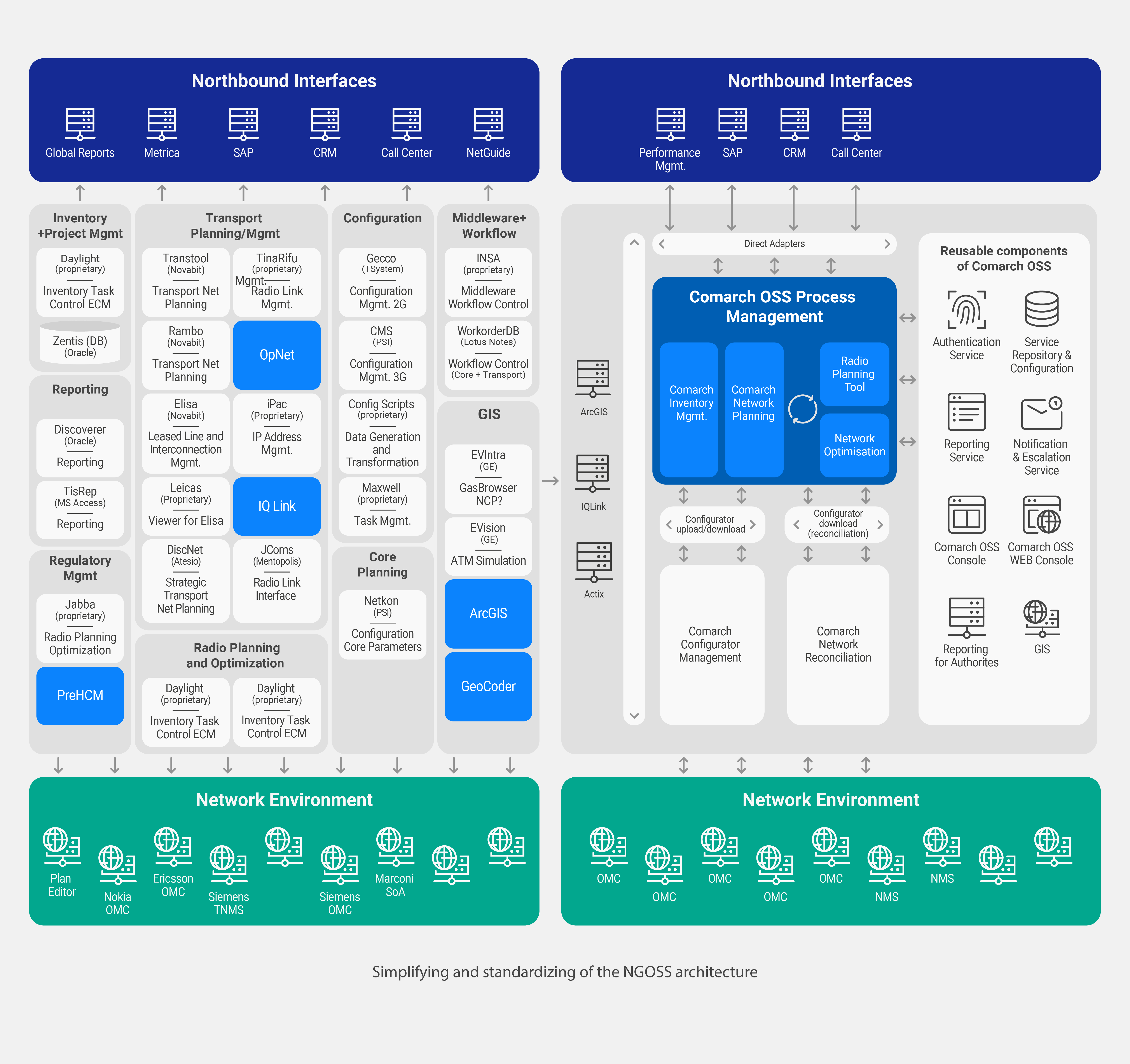Increasing efficiency of business processes and managing NGN rollout costs are key issues to any mobile operator. E-Plus Germany selected the Comarch Next Generation Network Planning (NGNP) solution, together with the support in process reengineering, in order to achieve these goals.
The Business Need
E-Plus’ main goal in this project was to transform the processes and the organization. Existing network planning and rollout processes were very complex, with hundreds of workarounds for simple operations, not supported by the tools already in use. In order to start thinking about lean, smooth and efficient processes, Comarch and E-Plus had to stop thinking about applications and focus on business activities in the area of planning and network integration. To secure ROI for the project E-Plus defined a list of business KPIs. These included two high-level business goals: increase of efficiency in planning and rollout by 50% and reducing time-tomarket for new technologies to 3-6 months.




